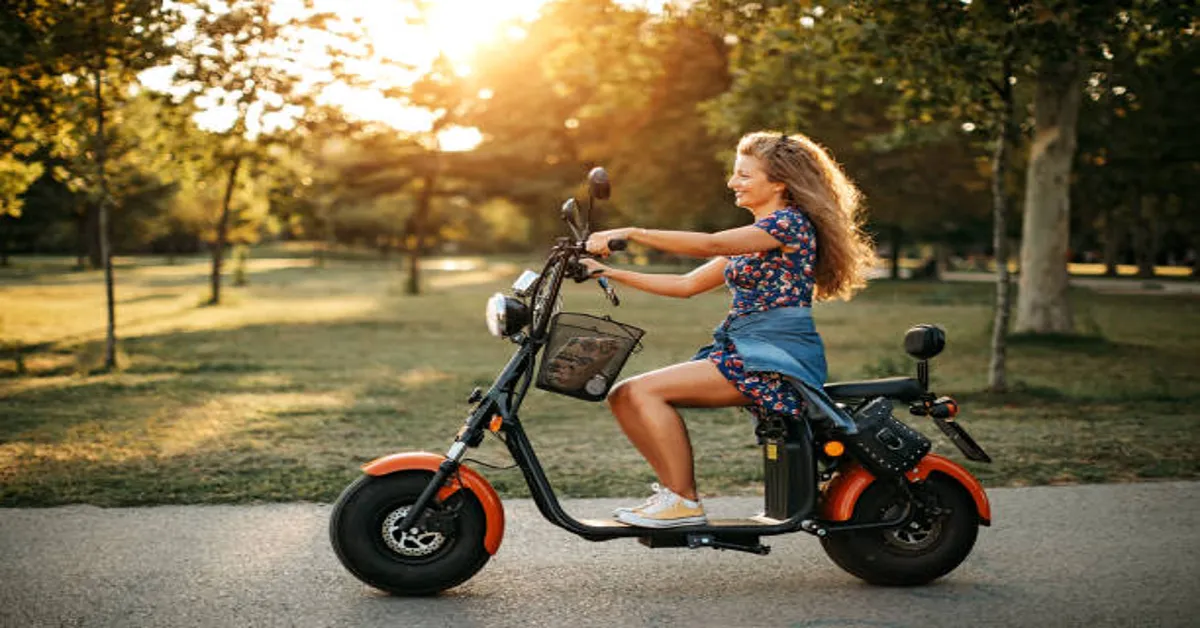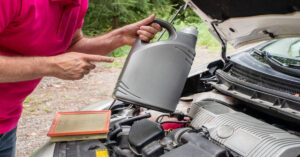The term eschopper refers to a modern electric chopper-style scooter or motorcycle designed for urban mobility and eco-friendly transportation. Unlike traditional choppers powered by petrol engines, an eschopper runs on rechargeable batteries, offering a smooth, quiet, and emission-free ride. With cities around the world embracing sustainable mobility, eschoppers are becoming a popular alternative for commuters, leisure riders, and businesses that rely on last-mile delivery solutions. Their stylish design, low running cost, and environmental benefits make them a unique blend of practicality and lifestyle expression.
In this comprehensive article, we will explore everything about eschoppers: their design philosophy, working technology, environmental impact, advantages, limitations, and future outlook.
Evolution of the Eschopper Concept
The chopper motorcycle, originally popularized in the mid-20th century, was known for its extended forks, stretched frames, and rebellious style. Enthusiasts customized motorcycles to reflect personal freedom and individuality. Over time, this culture gave birth to electric adaptations, creating the eschopper.
Eschoppers maintain the iconic chopper look but replace the roaring combustion engine with an electric motor powered by lithium-ion batteries. This transformation was driven by three factors:
- Environmental awareness – stricter emission rules encouraged electric alternatives.
- Urban challenges – cities needed quieter, cleaner vehicles.
- Technological advancements – lightweight batteries and efficient motors became affordable.
Thus, the eschopper evolved as a fusion of tradition and innovation, retaining the spirit of the chopper while embracing sustainability.
How an Eschopper Works
At its core, the eschopper is powered by an electric drivetrain consisting of four key components:
- Battery Pack – Most eschoppers use lithium-ion batteries ranging from 20Ah to 40Ah capacity. These are lightweight, long-lasting, and rechargeable through household sockets.
- Electric Motor – Mounted in the hub or frame, typically delivering 1000W–3000W of power. This determines acceleration and top speed.
- Controller – An electronic system that regulates power delivery from the battery to the motor, ensuring smooth acceleration.
- Throttle & Brakes – Similar to conventional bikes, the throttle controls speed, while disc brakes provide safety and control.
A typical eschopper can reach speeds of 25–45 km/h, depending on regulations and design. Charging usually takes 4–6 hours, and one full charge offers a range of 40–70 km.
Advantages of Using an Eschopper
1. Eco-Friendly Transportation
Eschoppers produce zero direct emissions, reducing the carbon footprint of personal mobility. By switching from petrol to electric, riders contribute to cleaner air and reduced noise pollution.
2. Cost Efficiency
Operating costs are significantly lower compared to petrol scooters. Charging an es-chopper for 50 km may cost less than a cup of coffee, while maintenance is minimal due to fewer moving parts.
3. Stylish and Comfortable Ride
The iconic chopper design, wide handlebars, and low seating make es-choppers stand out. Many models come with fat tires for extra stability and a smooth riding experience.
4. User-Friendly Operation
With no gears, clutch, or complex mechanics, es-choppers are beginner-friendly. Riders only need to twist the throttle and enjoy the ride.
5. Urban Mobility Solution
Their compact size, ease of parking, and compliance with city speed limits make es-choppers ideal for navigating congested areas.
Limitations to Consider
Despite their benefits, es-choppers have some limitations:
- Range Anxiety – Limited range compared to petrol scooters makes them unsuitable for long trips without charging points.
- Charging Time – Unlike refueling, charging takes several hours, which can be inconvenient for heavy users.
- Weather Dependency – Battery performance may drop in extreme cold or hot climates.
- Initial Cost – Though operational costs are low, the purchase price is often higher than conventional scooters.
Technical Specifications Comparison
Here’s a general comparison table of typical es-chopper models:
| Specification | Standard Model | Advanced Model | Premium Model |
|---|---|---|---|
| Battery Capacity | 20Ah | 30Ah | 40Ah |
| Motor Power | 1000W | 2000W | 3000W |
| Range per Charge | 40 km | 55 km | 70 km |
| Charging Time | 5-6 hours | 5 hours | 4 hours |
| Top Speed | 25 km/h | 35 km/h | 45 km/h |
| Tire Type | Standard | Fat Tires | Extra-Wide |
| Price Range (USD) | $1200–1500 | $1600–2000 | $2200–3000 |
This table highlights that higher-end es-choppers provide better performance but at a higher investment.
Environmental Impact of Eschoppers
One of the strongest arguments in favor of es-choppers is their contribution to environmental sustainability. Traditional motorcycles emit greenhouse gases, while es-choppers run silently and cleanly. If charged using renewable energy sources such as solar or wind, their carbon footprint becomes almost negligible.
Additionally, governments are offering subsidies and tax benefits for electric two-wheelers, making es-choppers a greener and more affordable choice. However, battery recycling remains a concern, and manufacturers are now focusing on developing eco-friendly battery disposal and second-life usage programs.
Applications of Eschoppers
1. Personal Commuting
For short-distance city travel, es-choppers provide a convenient and economical choice. Their style also makes them attractive for leisure rides.
2. Tourism and Rentals
Many tourist destinations are adopting es-choppers for guided city tours. They allow tourists to explore comfortably without polluting the environment.
3. Delivery Services
Businesses such as food delivery and courier services are switching to es-choppers to reduce fuel costs and align with sustainability goals.
4. Corporate Mobility
Companies are introducing es-choppers as part of employee commute solutions, particularly for large campuses and industrial areas.
Buying Guide: Choosing the Right Eschopper
When buying an es-chopper, several factors must be considered:
- Battery Life & Range – Choose based on your daily distance requirements.
- Motor Power – Higher wattage motors offer better acceleration and hill-climbing ability.
- Legal Compliance – Speed limits and licensing requirements differ by region. Some models may not need a driving license.
- Comfort Features – Check seating, suspension, and tire type for comfort.
- After-Sales Support – Availability of spare parts, service centers, and warranty coverage.
- Budget – Balance between initial cost and long-term savings on fuel and maintenance.
Future of Eschoppers
The future of eschoppers looks promising as technology advances. With faster charging batteries, longer ranges, and smart connectivity features like GPS tracking, mobile apps, and anti-theft systems, es-choppers are evolving beyond simple electric bikes.
Integration with renewable energy charging stations, shared mobility platforms, and smart cities will further increase their adoption. As battery costs continue to drop, es-choppers will become even more accessible to the masses.
Conclusion
The eschopper represents a modern blend of style, sustainability, and practicality. By reimagining the classic chopper into an electric form, it allows riders to enjoy the thrill of cruising while contributing to a cleaner environment. Despite limitations like charging time and range, es-choppers are becoming a popular choice for urban commuting, leisure riding, and even commercial applications.
As battery technology improves and infrastructure expands, es-choppers will likely play a central role in shaping the future of green mobility. For riders seeking a cost-effective, eco-friendly, and stylish mode of transport, the es-chopper stands out as a powerful option that balances tradition with innovation.
ALSO READ: 5 Signs You’ve Found the Perfect Tyre Shop in the UAE
FAQs on Eschopper
1. What is the maximum speed of an eschopper?
Most eschoppers are designed to reach speeds between 25–45 km/h, depending on the model and local regulations.
2. How long does it take to charge an eschopper?
On average, an eschopper battery takes 4–6 hours to fully charge using a standard household power socket.
3. Do I need a license to ride an eschopper?
It depends on local laws. In many regions, low-speed models under 25 km/h may not require a license, but higher-speed ones do.
4. How much does an eschopper cost?
Prices vary between $1200 and $3000, depending on battery size, motor power, and additional features.
5. Are eschoppers suitable for long-distance travel?
Eschoppers are best for short and medium distances within cities. They are not ideal for long highway journeys due to limited range.









